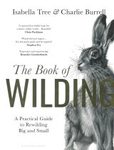![Mountain Flowers Mountain Flowers]()
Click to have a closer look
About this book
Contents
Customer reviews
Biography
Related titles
About this book
Britain's mountains – and the exposed sub-arctic regions of her far north – are home to a staggering range of specialist flowers, shrubs and ferns. These plants are able to thrive on our islands due to conditions unusual in mainland Europe. The peculiarities of their occurrence here, at unusually low altitudes for typically alpine species and unusually far south for typically arctic species, make their ecology especially intriguing.
In a journey that ranges from The Lizard of Cornwall to Unst in Shetland, Mountain Flowers looks at the British sites that support the richest mountain flora, and discusses the ecology and distribution of the key montane and submontane plants, with a particular focus on the conservation of the rarest species.
It is a book that will have much to offer wildflower enthusiasts and botanists – not least in its lavish illustrations – and will be an indispensable companion for hill walkers and climbers wanting to learn about the plants that are such an intrinsic part of the British mountain landscape.
Read an interview with the author on our blog.
Contents
Preface 1 Introduction: the allure of mountain flowers 2 What are mountain flowers? 3 Origins and survival of our mountain flora 4 Zones of life 5 Southern outliers 6 The mountain heart of Wales 7 Peaks and dales 8 Upper Teesdale and the north Pennines 9 The Lake District and Northumberland 10 The Southern Uplands 11 The Glens of Angus and Aberdeenshire 12 Hills of the southern Highlands 13 The Breadalbane hills 14 The Cairngorms and north-east Highlands 15 The western Highlands and islands 16 Hills of the far north 17 The arctic fringe 18 Mountain conundrums 19 Looking to the future
Customer Reviews
Biography
Michael Scott became interested in the flora of Britain's mountain and sub-arctic regions while studying botany at Aberdeen University. He has walked many of the hills of Scotland, Wales and northern England looking for wild flowers in magnificent scenery, and has also botanised widely in the Arctic. For many years he ran a field course on mountain flowers at a field centre in Highland Perthshire. He is a former Scottish Officer of Plantlife, the wild plant conservation charity, and former Deputy Chairman of Scottish Natural Heritage. He was awarded an OBE in 2005 for services to biodiversity conservation in Scotland.
Monograph
By: Michael Scott(Author)
416 pages, 300 colour photos, 1 colour map, colour tables
"[...] A superbly written and readable book, this series always invites comparison to the New Naturalists and I feel they can stand alongside proudly. Sweeping in scope, in-depth and yet accessible and engaging I look forward to further titles if they all reach this standard. If you want a break from birds, I highly recommend this book!"
– Su Gough, BTO book reviews









































